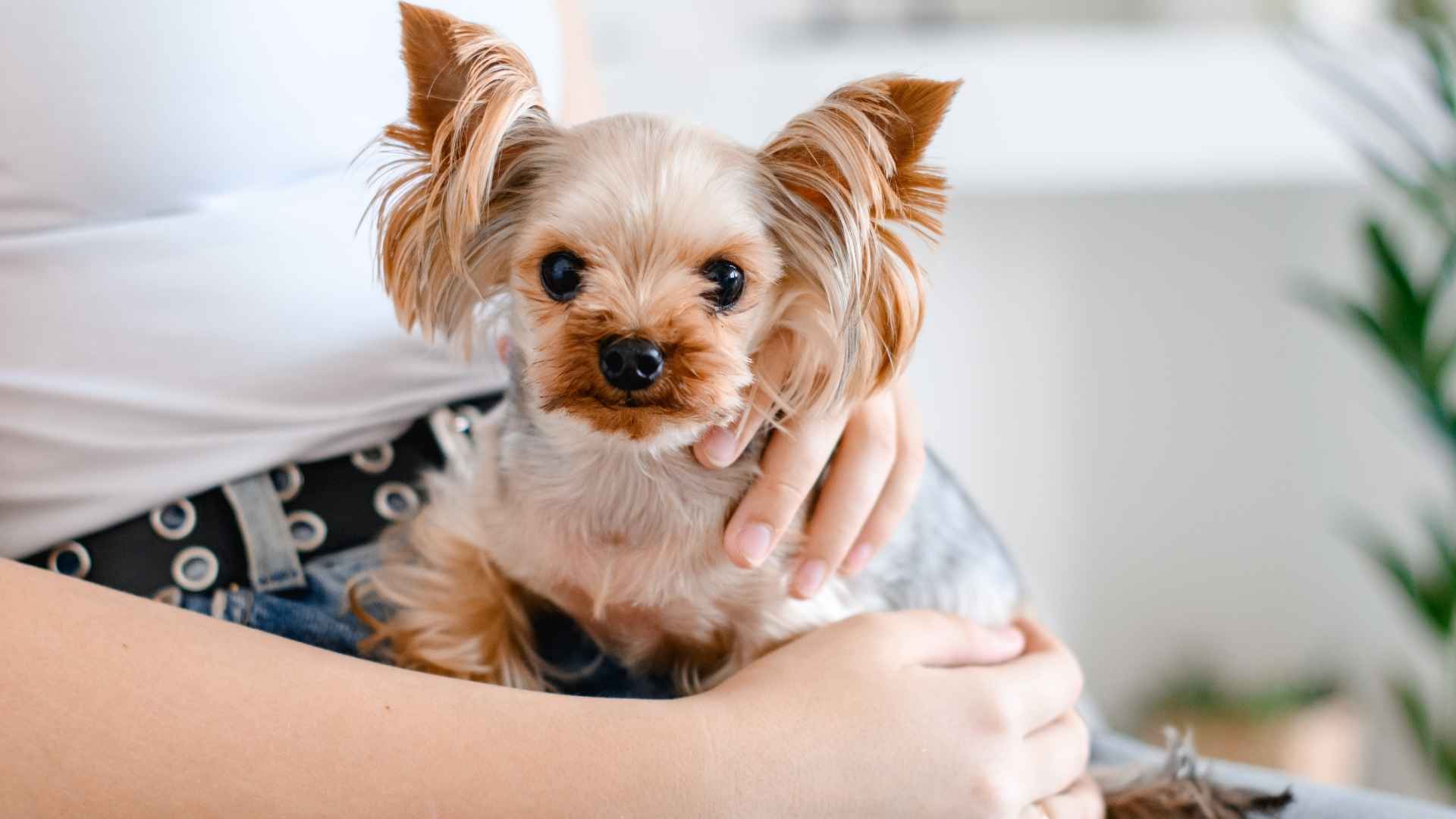Looking for a pup that’s small in size but huge in personality? Rare teacup dog breeds might just steal your heart (and your favorite spot on the couch)! These pint-sized charmers pack a whole lot of sass, smarts, and sweetness into their tiny frames—and some of them are so rare that you’ve probably never seen one at the dog park.
While most teacup breeds already have a fan club for their forever-puppy looks, the rarest of the bunch are even more special. From fluffballs that fit in your hand to spunky little explorers with lively expressions, these tiny dogs bring big joy in miniature form. But don’t be fooled—just because they’re a small dog breed doesn’t mean they’re low-maintenance.
Choosing the right rare dog breed means knowing their grooming needs, energy levels, and quirky personalities. Ready to meet the world’s most unique pocket-sized pups? Let’s dive into the cutest secret in the dog world!
Rare teacup dog breeds
1. Bolognese
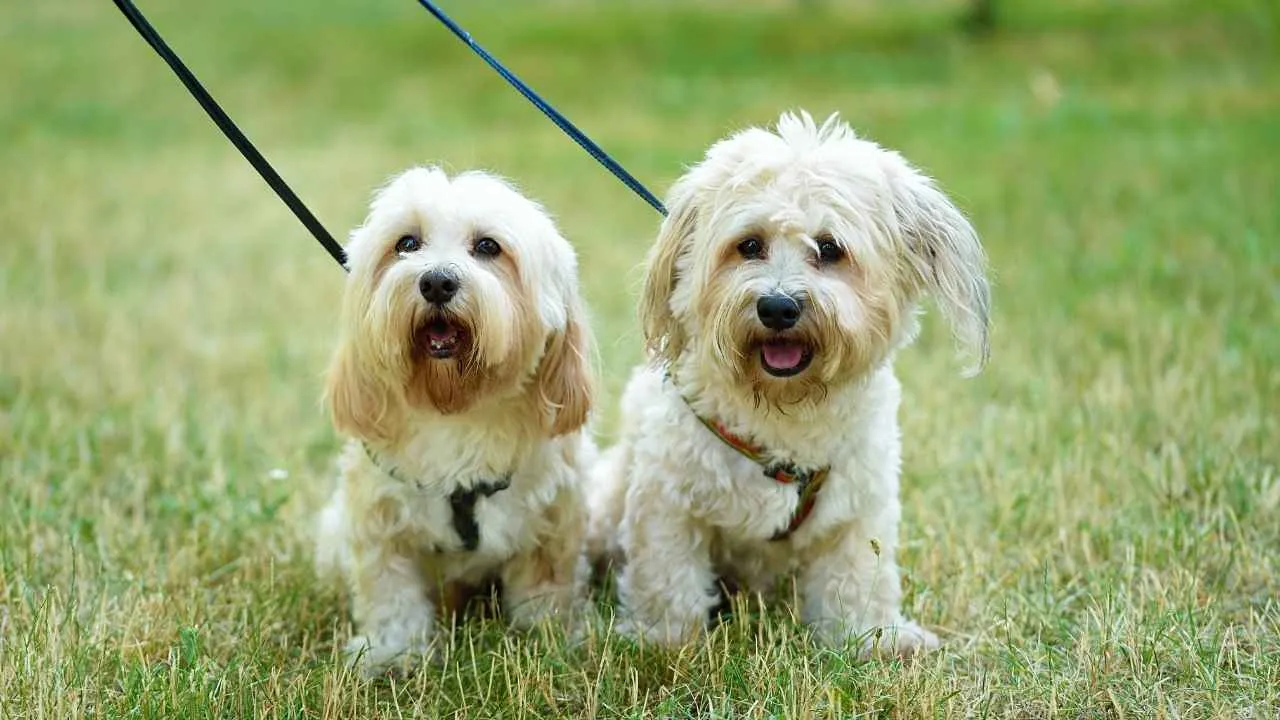
Meet the Bolognese dog—a fluffy, pint-sized companion with noble Italian roots. Once adored by Renaissance royalty and often gifted as a symbol of aristocratic generosity, these cloud-like pups are as charming as they are rare.
Closely related to the Maltese, Havanese, and Bichon Frise, Bolognese dogs stand just 10–12 inches tall and weigh 6–10 pounds. Despite their small size, they’re known for their calm, loyal nature and make easygoing travel companions who love staying close to their people.
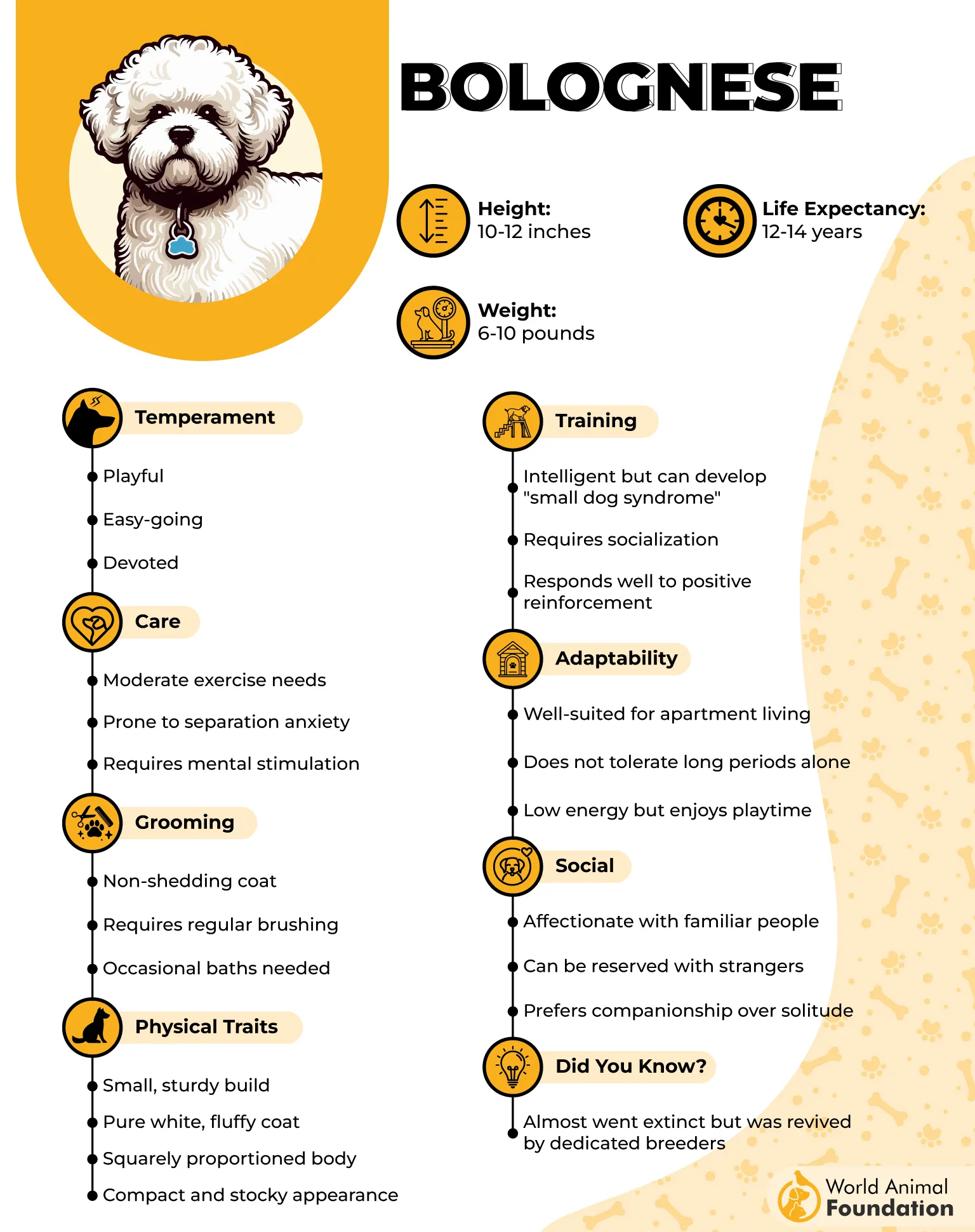
Bolognese are great with children, though their delicate frame means gentle handling is a must. Supervision of young kids helps ensure safe and happy play for everyone.
Bolognese dogs don’t need intense exercise—just a mix of short walks, indoor games, and brain-stimulating play keeps them content. Around 30–60 minutes of activity a day, broken up into smaller sessions, is ideal. For puppies, stick to gentle play to protect their developing joints.
Their signature white coat is beautiful but requires upkeep. Brushing several times a week, a bath every few weeks, and occasional trims will keep their fur in good shape. A groomer can help keep things tidy while offering coat-care tips.
2. Cesky Terrier
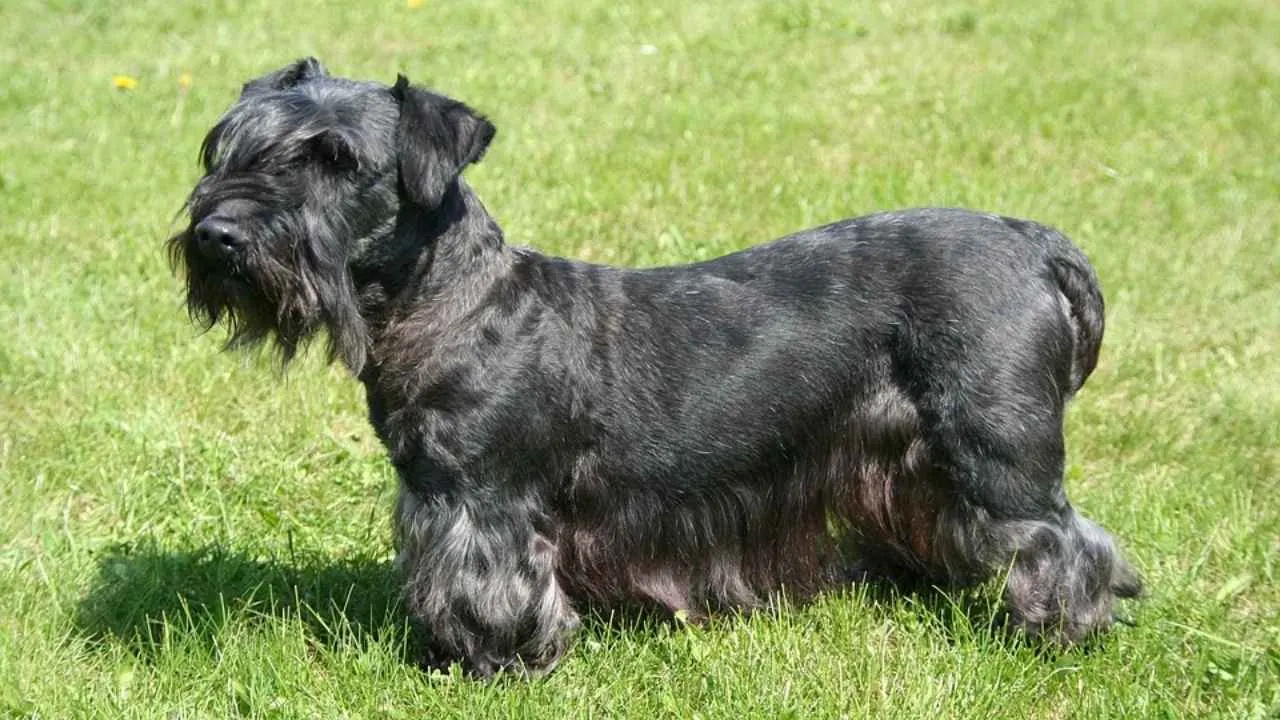
Say hello to the Cesky Terrier (pronounced chess-key)—a rare, refined little dog with a playful spirit and a surprising calmness for a terrier. Though not overly energetic, they enjoy games and outdoor fun, making them great companions for active households. As the national dog of the Czech Republic, they carry a touch of canine royalty.
Originally bred in the 1940s by Czech geneticist Frantisek Horak for hunting in Bohemian forests, today’s Cesky is more at home curled up on the couch—but still carries the bold heart of an explorer.
With only a few hundred in the U.S., Ceskys are among the rarest breeds. Their silky, wavy coats, distinct facial hair, and long, muscular bodies give them a polished yet endearing look. Behind that elegance is a lively personality full of quirky charm.
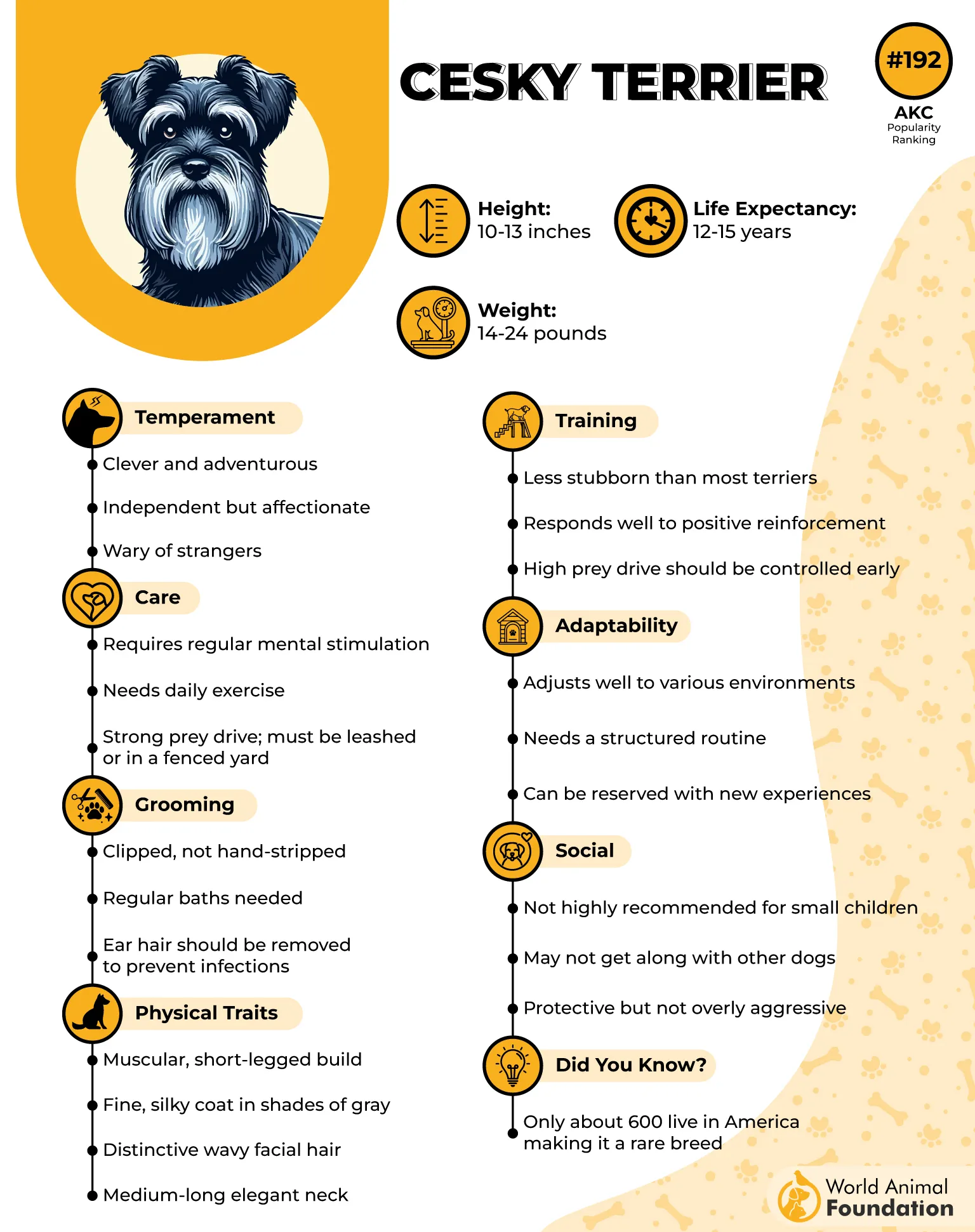
Though quieter than most terriers, Cesky Terriers are alert and protective. They form strong bonds with their families and won’t hesitate to sound the alarm when strangers are near. Early socialization helps balance their watchful nature with friendly manners.
Smart and eager to learn, and easy to train—but consistency is key. Without guidance and stimulation, their clever minds may lead them into mischief. Puzzle toys and interactive games are a great way to keep them engaged.
Their beautiful coats need some care. Puppies benefit from daily brushing, while adults require grooming a few times a week and trims every few weeks. Their soft fur comes in unique shades of gray-blue or light brown with charming markings.
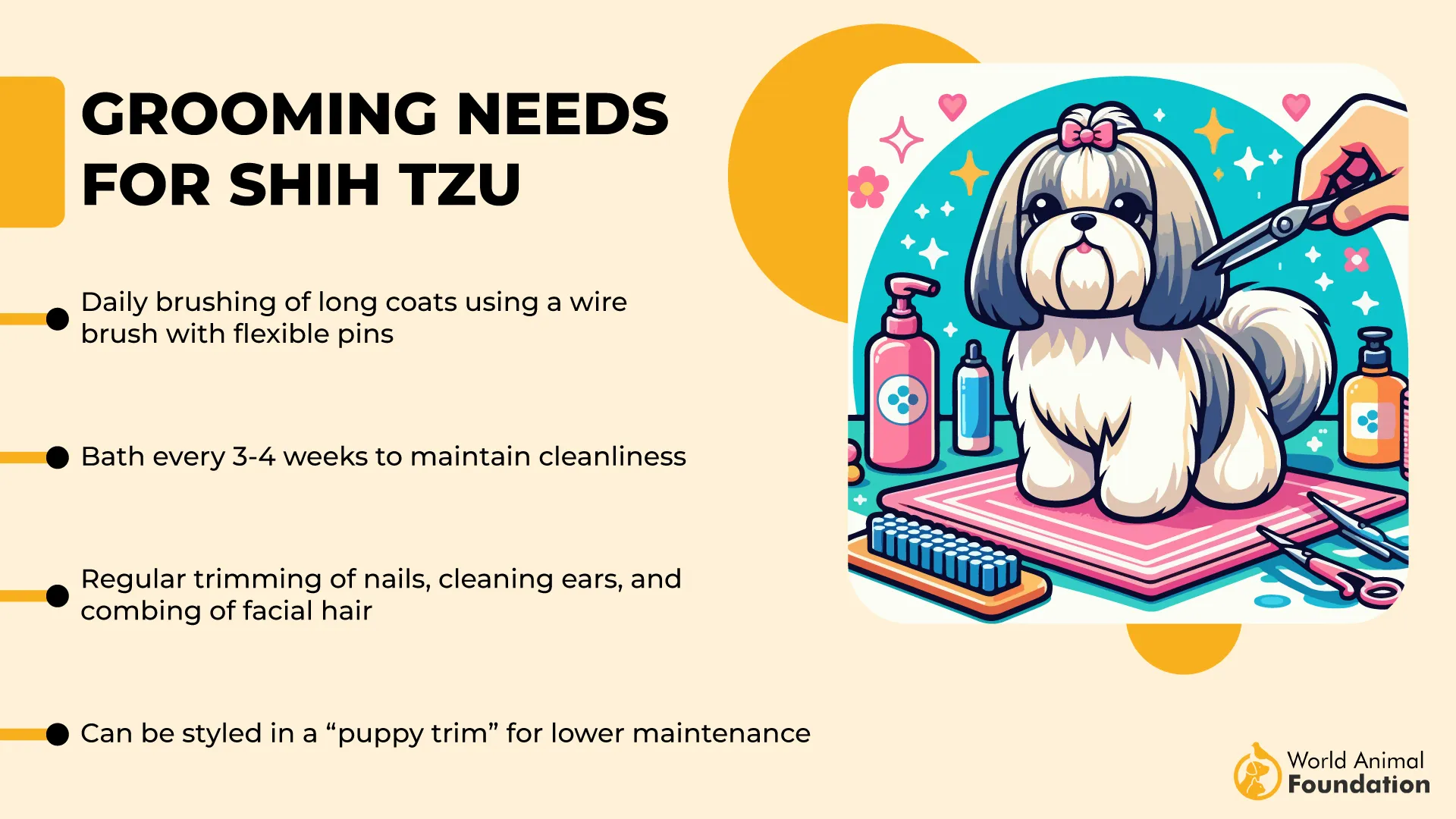
Cesky Terriers can live happily with kids and pets, especially when raised together. Their protective nature means it’s best to supervise play with small children, and socialization from an early age helps shape a polite, adaptable companion.
Fun Fact:
Like any self-respecting terrier, Ceskys love to dig. If you’ve got a pristine backyard, you might want to designate a digging zone or keep a close watch. They also enjoy chewing, so keep their toy basket well-stocked unless you want to sacrifice your shoes.
3. Dandie Dinmont Terrier
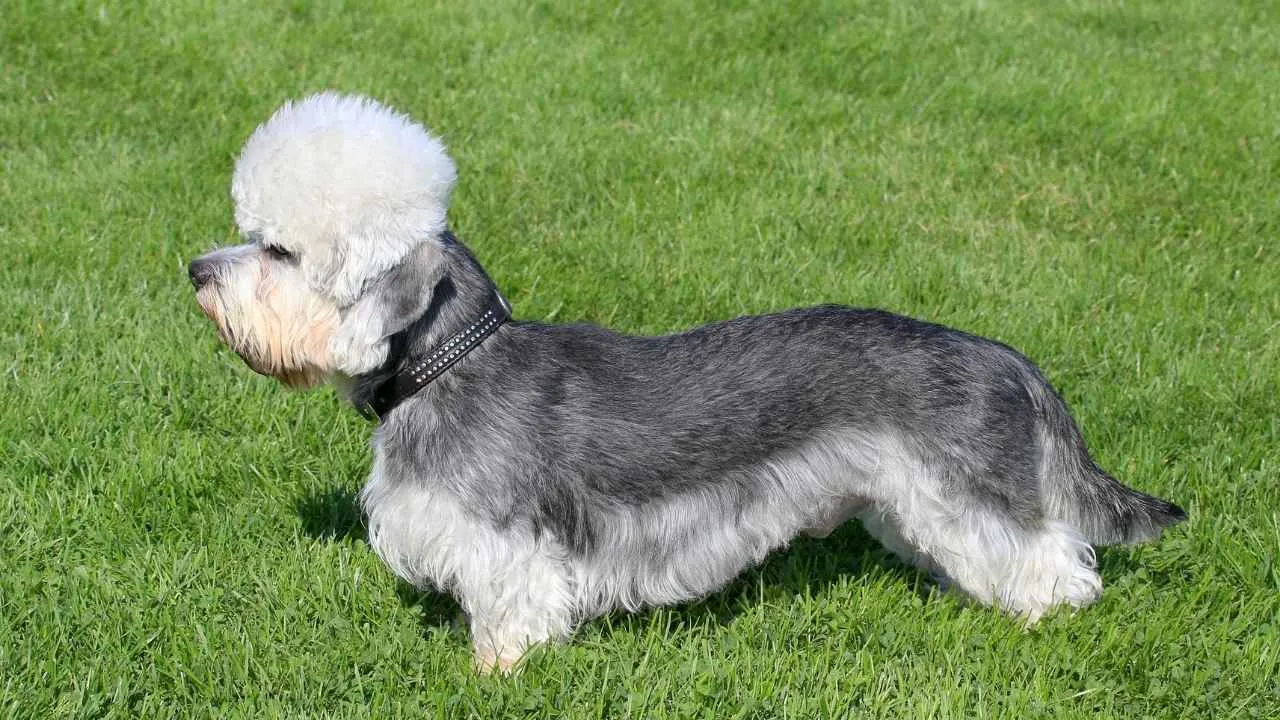
The Dandie Dinmont Terrier is the only dog named after a fictional character, thanks to Sir Walter Scott’s 1815 novel Guy Mannering. So beloved was the character’s loyal terrier that fans sought them out, and the name stuck for this charming Scottish breed.
Originally bred for hunting vermin along the England-Scotland border in the 1700s, Dandies balanced grit with charm. Though they now prefer laps to fields, they still carry the bold, independent spirit of a working dog, wrapped in a relaxed, affectionate demeanor.
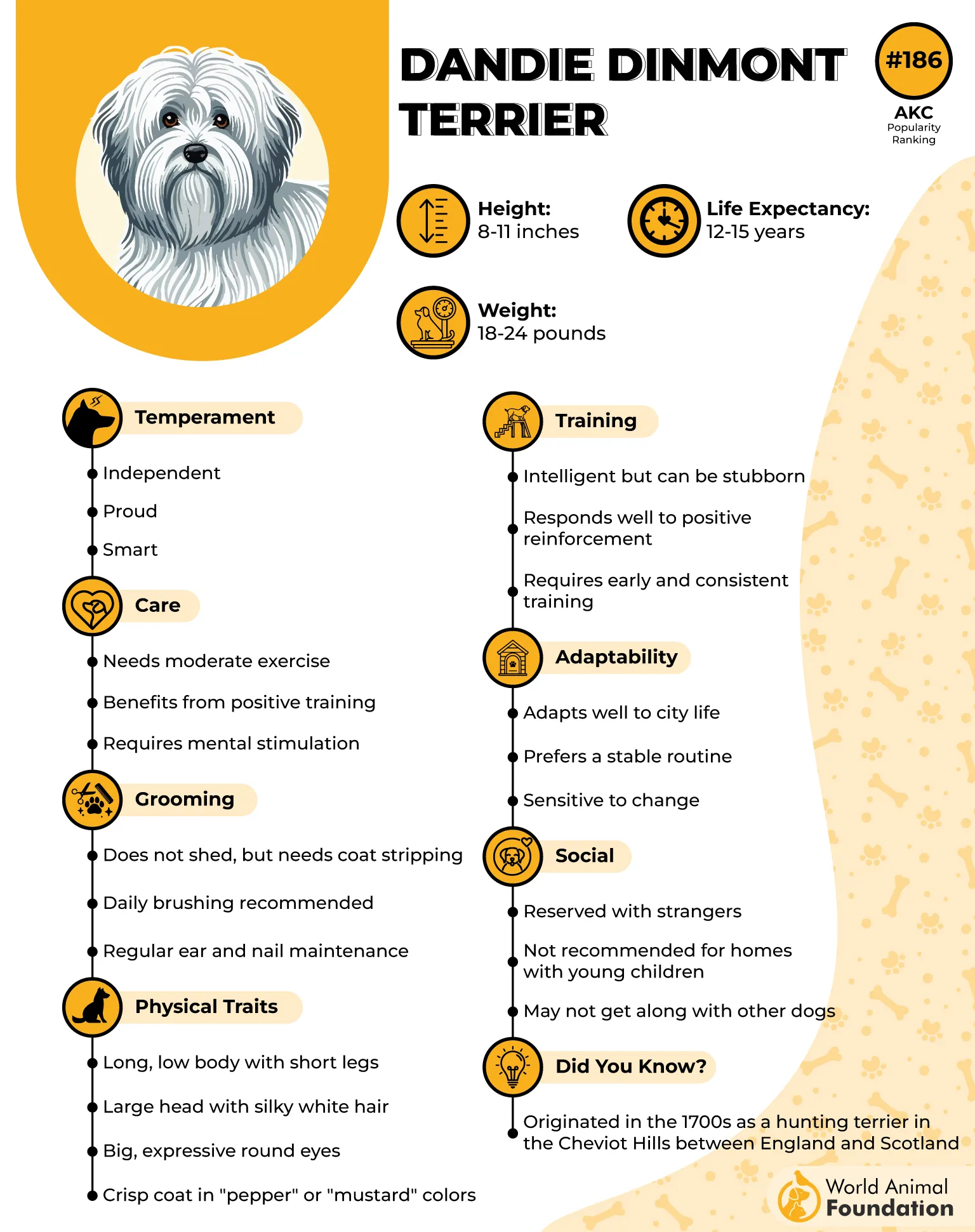
Despite their small size, they have a confident presence and a surprisingly deep bark. Dandies are intelligent and thoughtful, with a calm disposition that makes them easy companions, especially for those who appreciate a more laid-back yet loyal breed.
Their curved build, low stature, and domed heads set them apart from typical terriers. With bodies nearly twice as long as they are tall and a soft topknot that crowns their expressive faces, they’re as unique in appearance as they are in personality.
Their coat is a mix of soft and coarse textures, giving it a natural, hand-sketched look. Found in “pepper” or “mustard” tones, their fur needs regular grooming to stay neat, but it’s well worth it for a dog that blends style, substance, and historic charm.
Fit for a Queen (Literally!)
Pet lovers don’t just adore dandies for their adorable appearance—royalty has fallen for them too. Queen Victoria of England and King Louis Philippe of France were both proud of Dandie Dinmont’s parents. That regal flair might explain the breed’s confident, slightly aloof charm.
4. Finnish Spitz
With their fox-like looks—golden coats, perky ears, and curled tails—the Finnish Spitz seems plucked from a storybook. Known as “Finkies,” these spirited dogs have long held the title of Finland’s national breed, loved for their vibrant personality and striking presence.
Originally bred as bird-hunting dogs, Finkies used their sharp senses and rhythmic, yodel-like bark to point out game without startling it. That distinctive vocal talent still shines today, so while they’re charming, they’re also chatty and not shy about letting you know what’s on their mind.
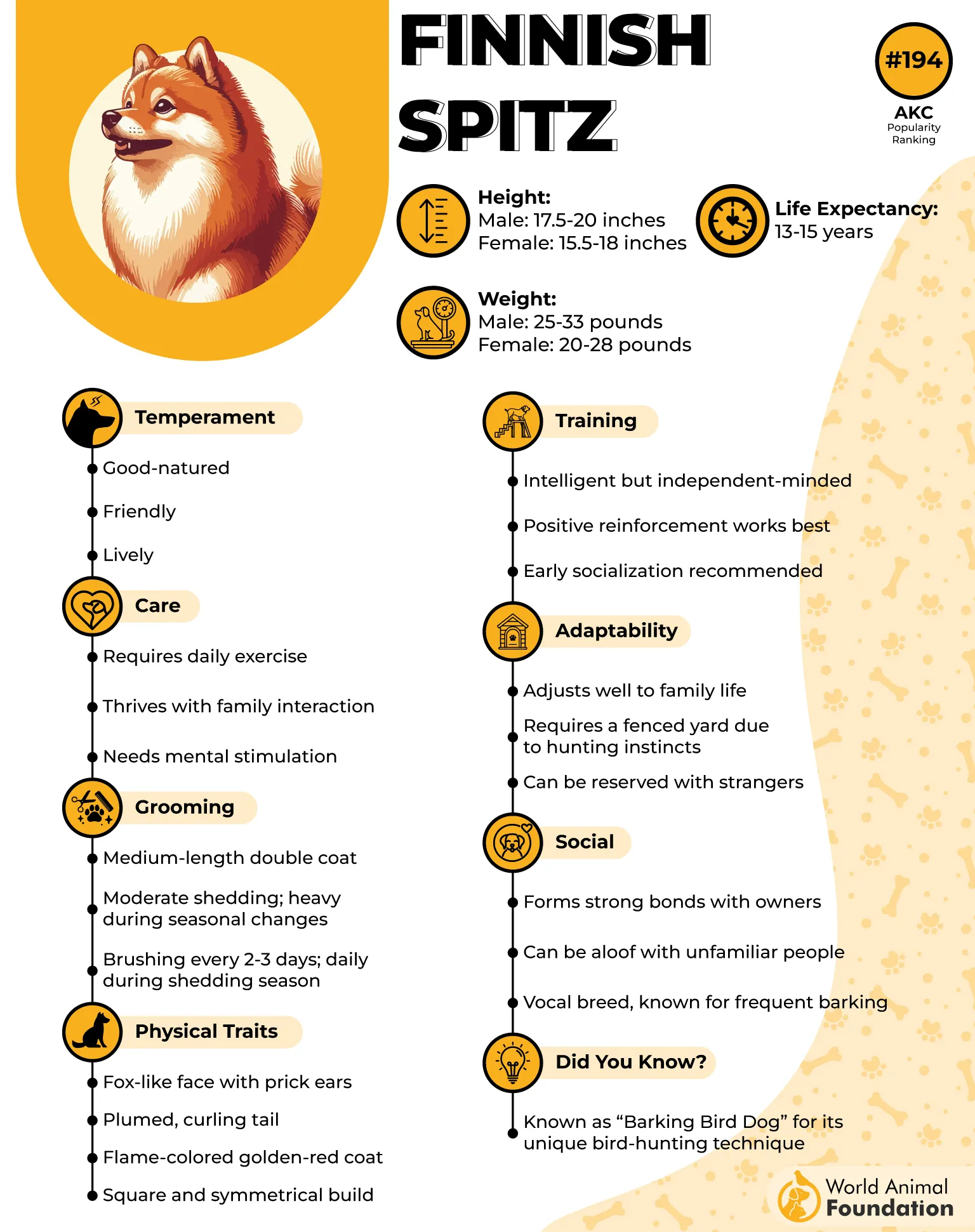
Purina states that despite their working roots, Finnish Spitzes are affectionate dogs and lively companions who bond closely with their families. They’re especially fond of children and love being part of the action, whether it’s a backyard game or a long hike. They may resemble the Shiba Inu, but their friendly, animated nature sets them apart.
Training them takes patience and positivity. Finkies are smart but independent, so harsh methods won’t work. Their extended puppy phase can be a handful, but with a gentle approach, you’ll earn their loyalty and playful affection.
These pups make excellent watchdogs—always alert and ready to announce visitors, but without aggression. Their love of barking, though instinctive, means apartment living may require early training and tolerant neighbors.
5. Russian Toy
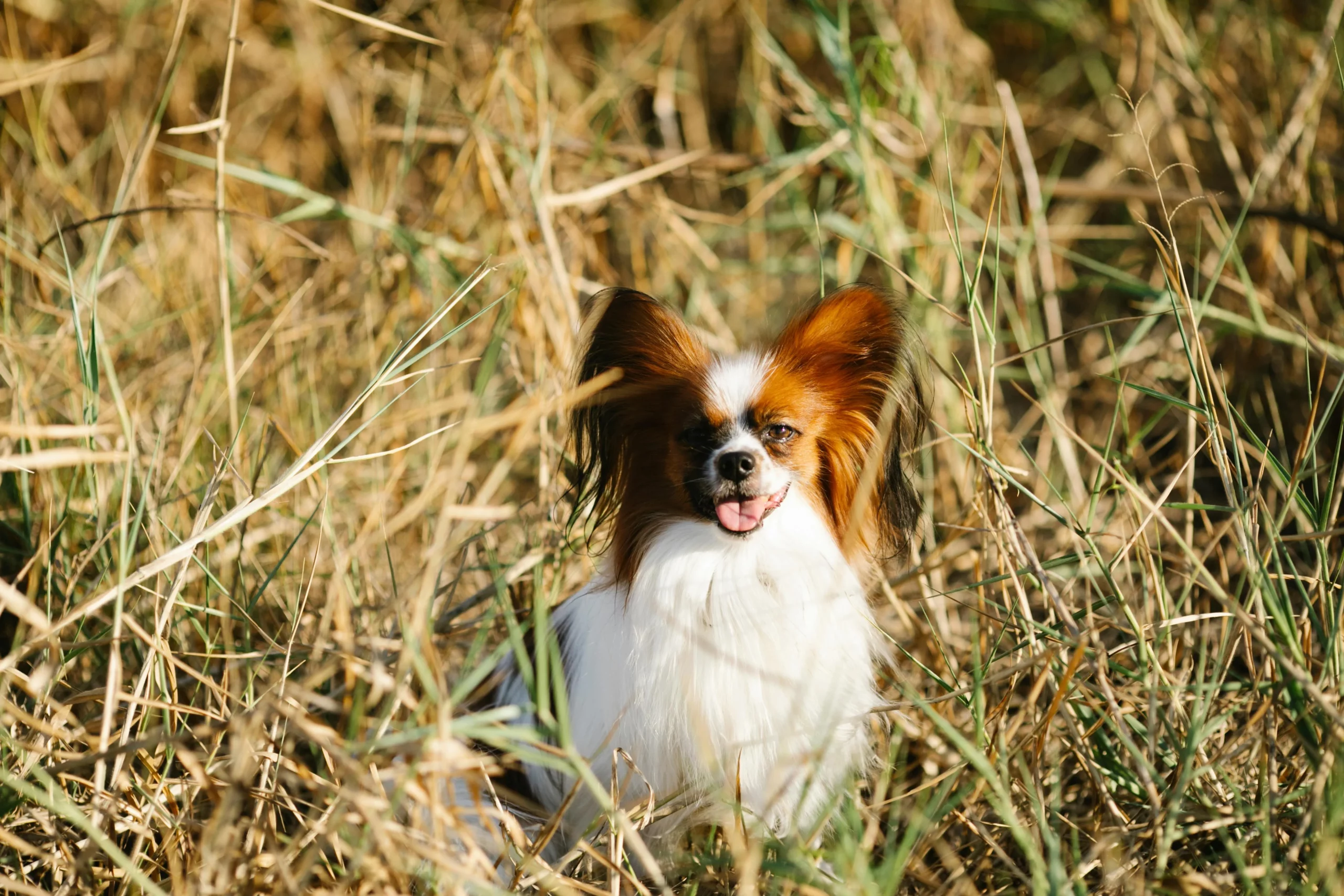
The Russian Toy may be tiny enough to tuck into a handbag, but it’s packed with personality. Elegant, intelligent, and deeply affectionate, this toy breed makes an ideal cuddle buddy and loyal sidekick, always ready to charm with its lively spirit, whether out for a stroll or nestled in your lap.
This breed traces back to 18th-century Russian nobility, originally imported from England as Toy Terriers before evolving into their own unique lineage. Nearly lost to history during the Russian Revolution, the breed was revived and formally recognized in the U.S. by the AKC in 2022.
With just under 800 in the U.S., the Russian Toy remains a rare find. But for those lucky enough to bring one home, these little charmers offer years of love, laughter, and elegant companionship.
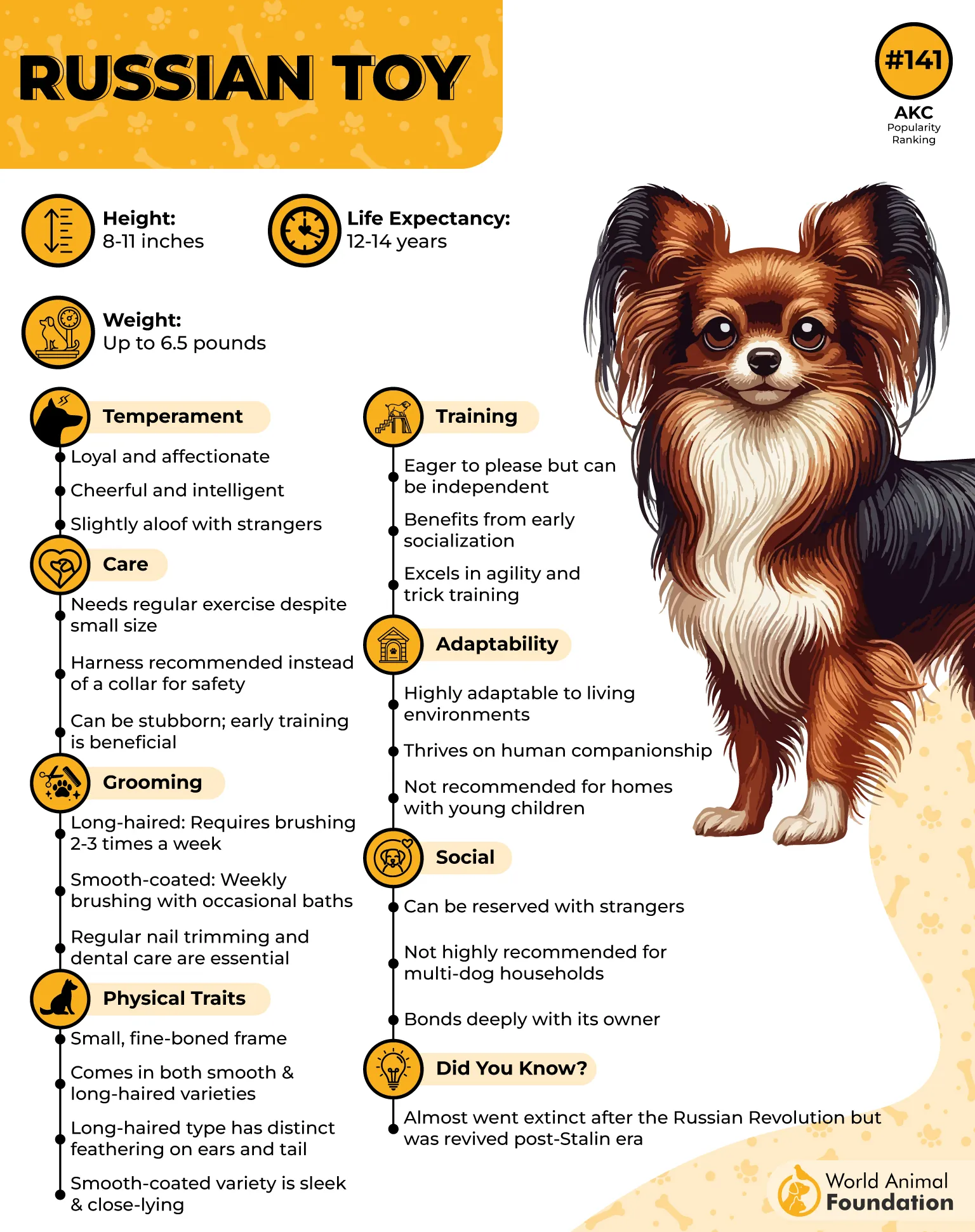
Standing just 20 to 28 cm tall and weighing a mere 1.5 to 3 kg, the Russian Toy is one of the smallest breeds in the world. With expressive eyes, upright ears, and a dainty build, they carry an air of alert curiosity. Their coat comes in two striking styles—sleek and shiny for smooth-haired pups, or soft and feathered for long-haired ones.
Though delicate in frame, they have bold, confident personalities. Slightly shy with strangers, they warm up quickly and form strong bonds with their humans. They’re best suited for adults or families with older kids, as their small size makes them fragile around young children.
Bright and eager to learn, Russian Toys respond well to gentle training. With early socialization and positive reinforcement, they become outgoing, polite companions who love to please—and don’t mind showing off a trick or two.
Did You Know?
That dainty bark comes with some serious history—Russian Toys were once considered great pets among the Russian nobility. And with their tiny size, huge hearts, and elegant look, it’s easy to see why they’ve always been treated like royalty.
6. Skye Terrier
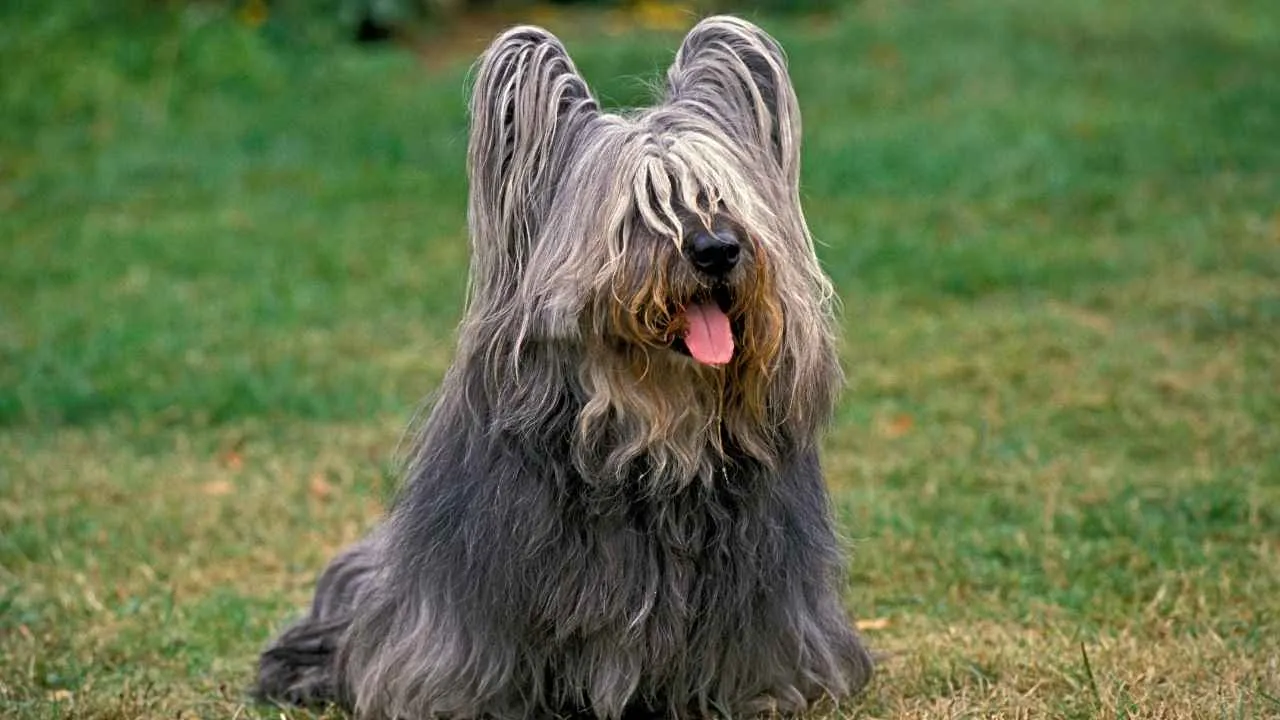
Originating from Scotland’s rugged Isle of Skye, the Skye Terrier is known for its long, flowing coat that covers its sturdy frame from head to tail. With colors ranging from black and blue to fawn, cream, and platinum, this low-slung breed stands about 10 inches tall and weighs between 35 to 45 pounds, combining elegance with resilience.
The breed’s unique look may be traced back to shipwrecked dogs mingling with local terriers in the 1500s and 1600s. Their sturdy build and coat suggest a mix of rough-and-ready working dogs, possibly even the Swedish Vallhund. Historically, they earned their keep hunting badgers and otters across rocky island terrain.
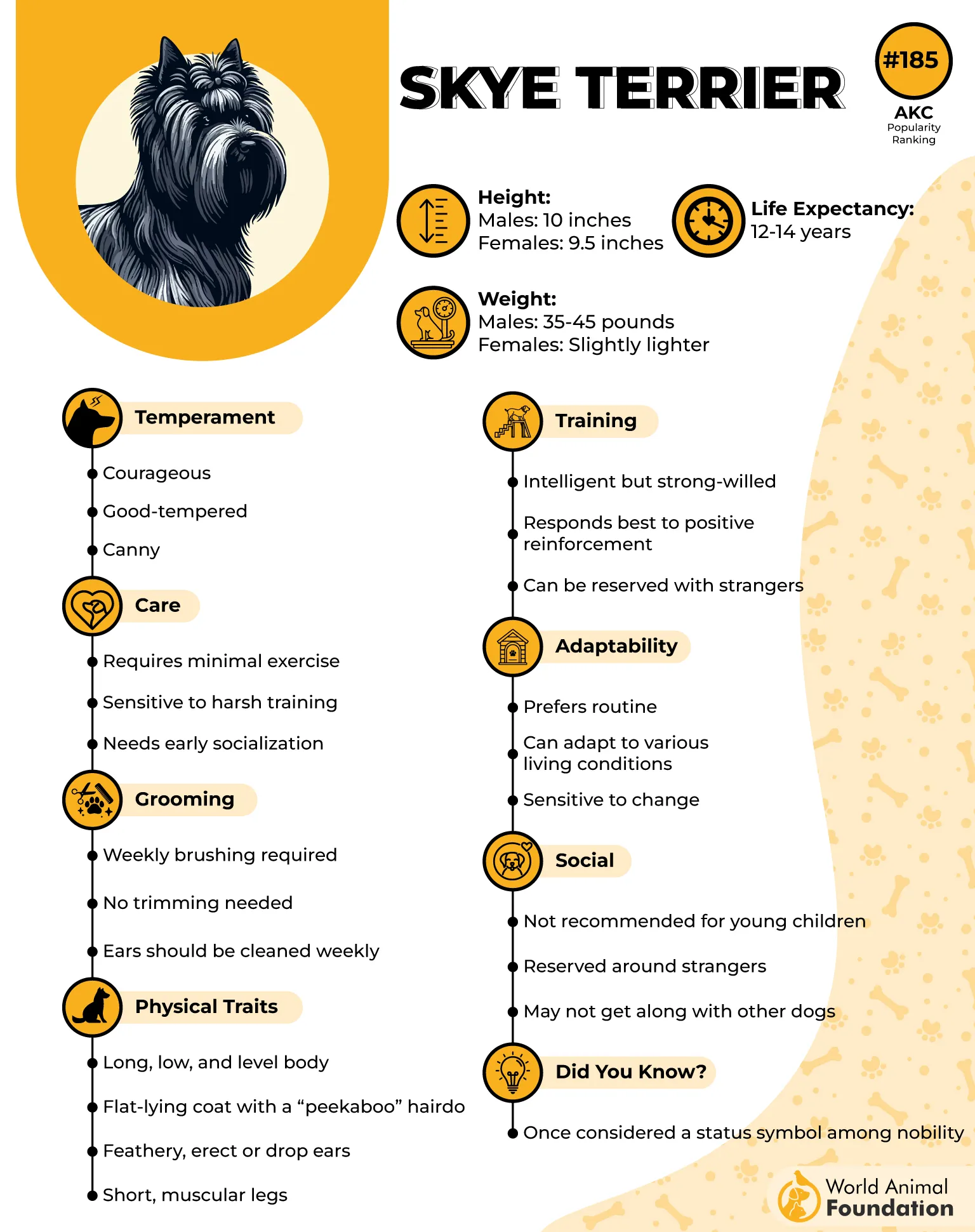
Beneath that silky coat is a spirited and energetic dog. Whether in the city or countryside, the Skye Terrier is always ready for an outing—be it a brisk walk, yard zoomies, or a hike. They are curious dogs and full of life; they bond closely with their humans and enjoy staying active.
Though their coat appears high-maintenance, grooming is manageable. A weekly brush usually keeps tangles at bay for indoor pets, while outdoorsy types may need more frequent cleanups. Trimming around the eyes, regular nail care, and ear cleaning are all part of their basic upkeep.
WebMD states Skye Terriers are generally healthy and live 12 to 15 years, but can be prone to certain health concerns. Dwarf breeds have small bodies and short legs, and they are susceptible to disk injuries. Also, “a puppy limp” may occur due to uneven bone growth in their legs, causing limping without pain.
Balanced in temperament, Skye Terriers mix calm companionship with a playful edge. While not overly demanding, they thrive on daily activity and love joining their humans on jogs, hikes, or simply exploring new spots with quiet confidence.
A Rare Gem in Today’s Dog World
Though regal and charming, the Skye Terrier isn’t a household name these days. Falling behind on the American Kennel Club’s popularity charts, this rare breed faces stiff competition from trendy designer dogs like Doodles. Sadly, they’re even considered one of the UK’s most endangered breeds.
7. Löwchen
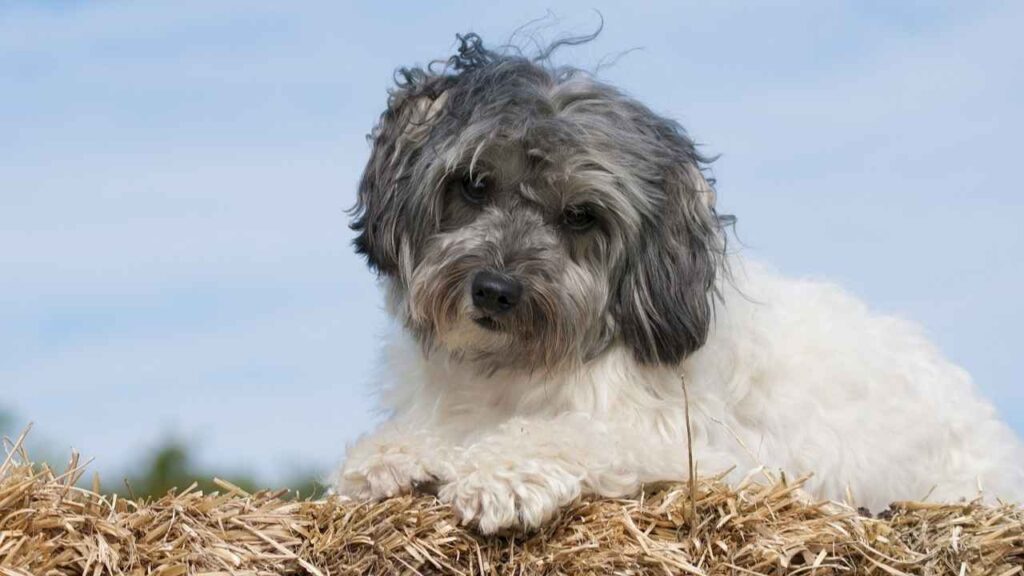
Ever heard of the Löwchen? The name means “little lion” in German, and once you see one, it clicks. With their bold stance and distinctive mane-like trim, these small dogs carry themselves like royalty. But beneath that regal look is a snuggly companion with a soft heart.
Standing just 12 to 14 inches tall and weighing around 15 pounds, the Löwchen may be tiny, but their confidence and charm are undeniable. Considered one of the world’s rarest breeds, they bring energy and affection into any home. Whether classified as a toy or non-sporting breed, they always make a big impression.
PetMD states their iconic “lion cut” adds to their fairytale appeal—flowing hair up front and on the tail, with a neatly clipped rear. The result is a pup that looks fierce but is mostly hoping for treats and tummy rubs.
These dogs thrive on attention and are happiest in homes where someone is usually around. They love kids, enjoy being playful, and crave interaction. If left alone for long periods, they may get separation anxiety and act out, so they’re best suited for families or pet owners who can provide consistent companionship.
Smart and eager to please, Löwchens responds best to gentle, positive training. They have a sensitive nature, so avoid harsh discipline. Early socialization helps them adjust to strangers and other pets, and it’s wise to curb excessive barking early on, as they tend to be quite vocal.
Fun Fact: A Coat to Cuddle (and No Fur on Your Couch)
With their long, wavy coat, Löwchens look like fluffy little royalty. Even better—they’re basically non-shedding and don’t drool, making them perfect for neat freaks and allergy-sensitive folks. A bit of grooming keeps them looking sharp, especially if you want to rock that iconic lion style!
Conclusion
Rare teacup dog breeds, from teacup Chihuahuas and Maltese to teacup Yorkies and Poodles, offer charming companions ideal for small living spaces and apartment life. At the same time, popular dog breeds like the Cavalier King Charles Spaniel, Shih Tzu, and toy Manchester Terrier share similar gentle natures.
Teacup versions such as the teacup Dachshund, Beagle, and Frenchie require careful attention to health concerns like low blood sugar and brachycephalic syndrome. Responsible breeding and proper training are essential to avoid health problems common in teacup puppies, especially due to unscrupulous breeders ignoring breed standards.
Whether you choose a teacup Papillon, Bichon, or Italian Greyhound, these tiny toy dogs make great family dogs when socialized well with other dogs and animals. Always prioritize animal welfare to ensure your small but spirited companion thrives happily and healthily.


